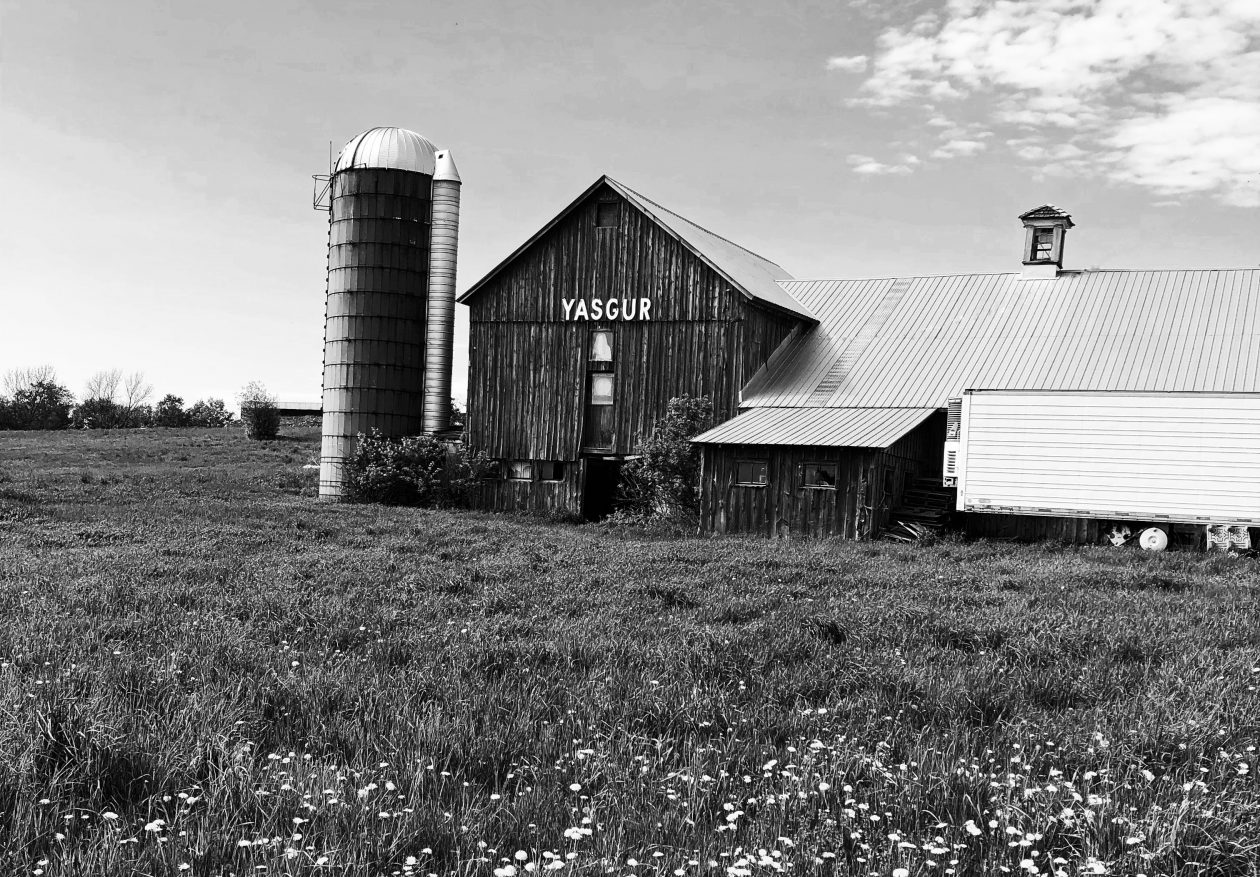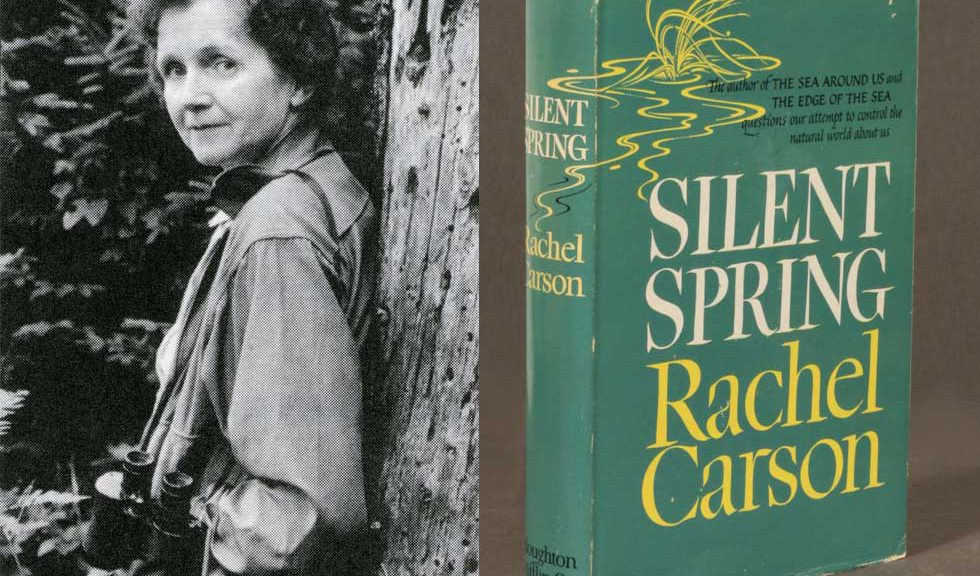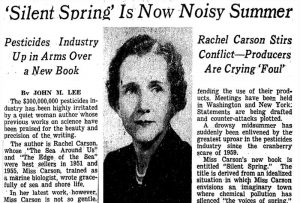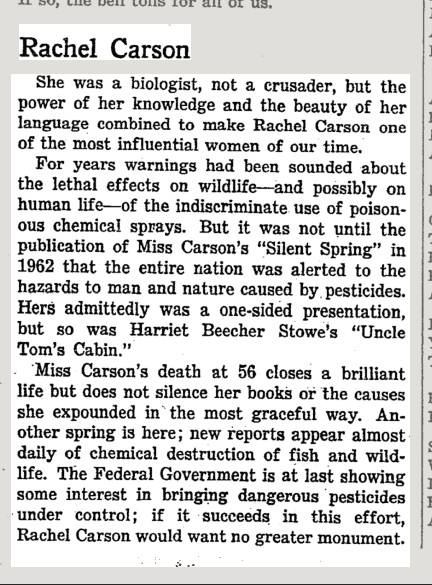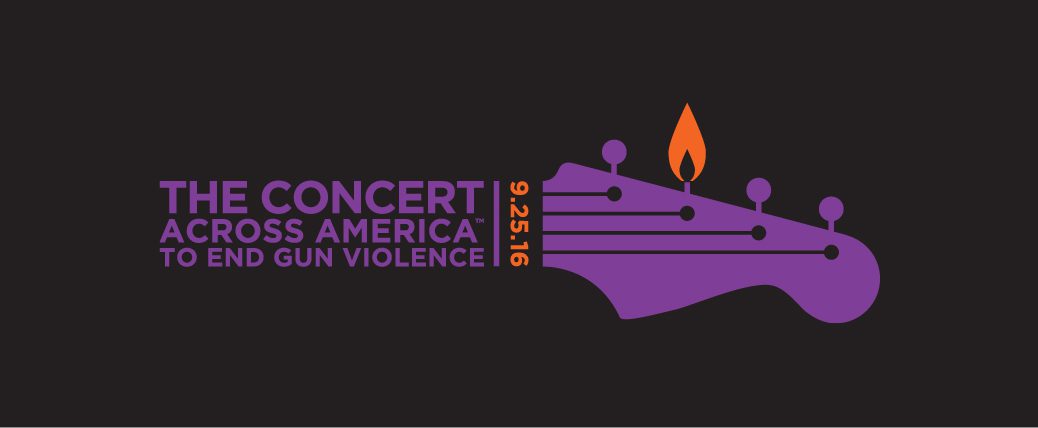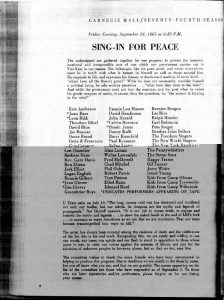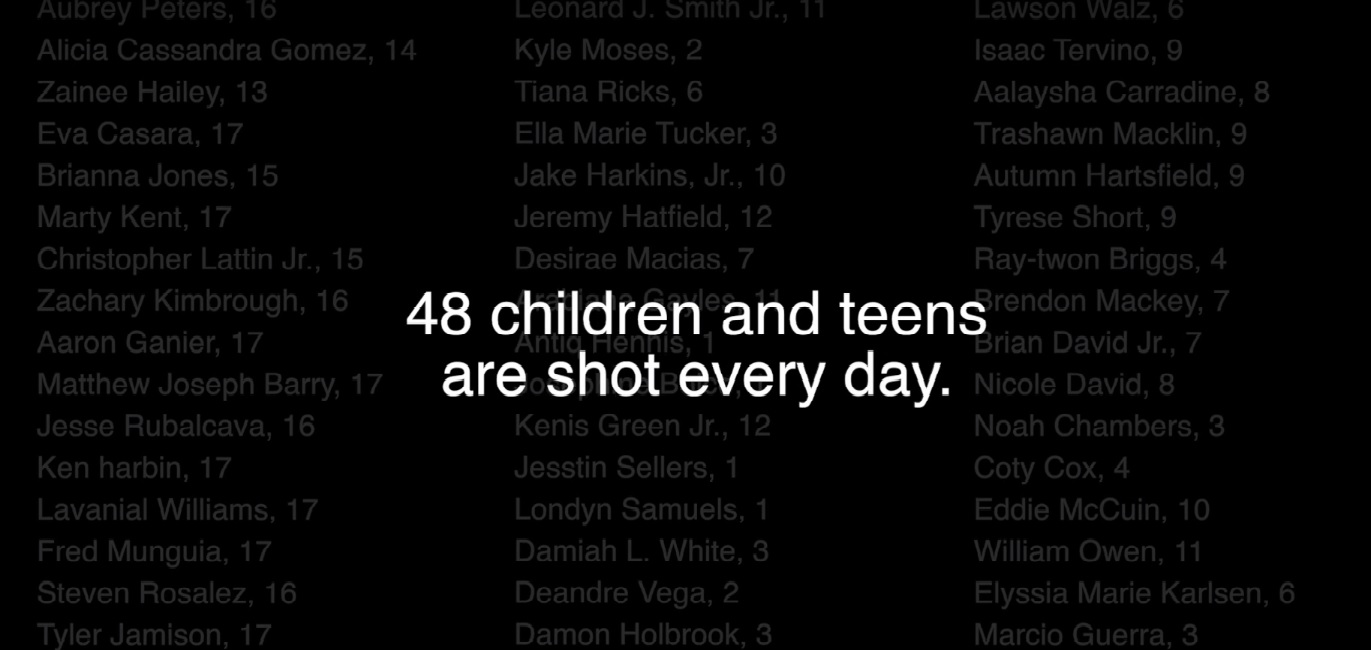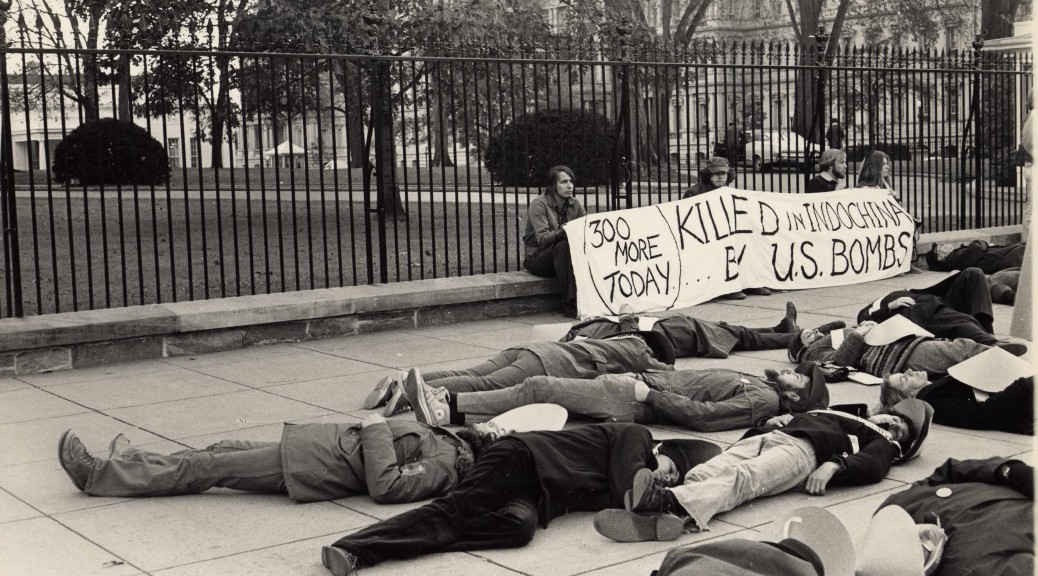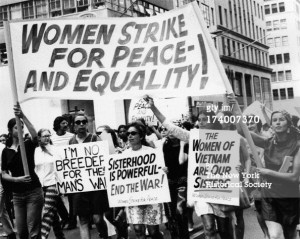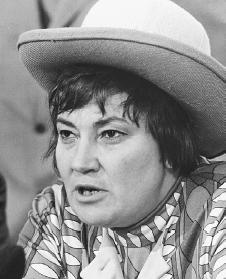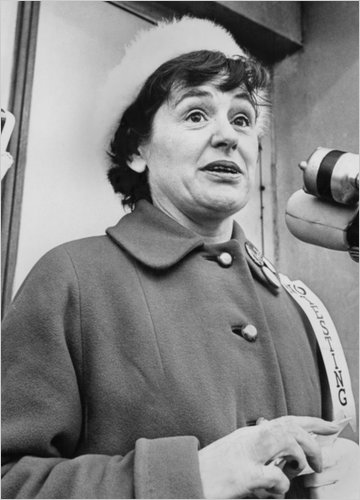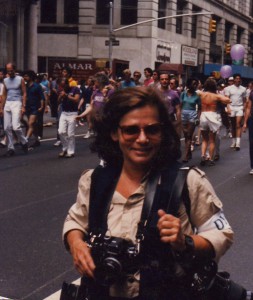Rachel Carson Silent Spring 1962
Published September 27, 1962
Love of Nature
Rachel Carson grew up in rural Springdale, Pennsylvania. She graduated from Pennsylvania College for Women (now Chatham University) in 1929, studied at the Woods Hole Marine Biological Laboratory, and received her MA in zoology from Johns Hopkins University in 1932.
During the Depression, the U.S. Bureau of Fisheries hired her to write radio scripts. In 1936 she began a fifteen-year career in the federal service as a scientist and editor. She eventually became the Editor-in-Chief of all publications for the U. S. Fish and Wildlife Service.
Rachel Carson Silent Spring 1962
Writer
Carson also wrote articles for outside publication: “Undersea” (1937, for the Atlantic Monthly), Under the Sea Wind (1941). In 1952 she published a prize-winning study of the ocean, The Sea Around Us and in 1955 The Edge of the Sea.
After leaving government service, she wrote articles designed to teach people about the wonder and beauty of the living world, including “Help Your Child to Wonder,” (1956) and “Our Ever-Changing Shore” (1957). The theme that ran through her writings was that humans are a part of not apart from Nature.
Rachel Carson Silent Spring 1962
Post WW II
After World War II, the use of chemicals to solve problems became increasingly commonplace. The pharmaceutical sector of the economy grew as well as other chemical-related industries.
Because the immediate benefits of such widespread chemical use were so obviously beneficial, society and science ignored or at least did not consider its long-term impact.
On September 27, 1962 Houghton Mifflin published Silent Spring. In it Carson argued that the long-term impact of DDT (dichlorodiphenyltrichloroethane) was disastrous to the environment, particularly the egg production of birds in the wild.
Luckily for Carson, the bald eagle is the national bird of the United States and America’s sense of patriotism outweighed even the chemical industries outcries.
Rachel Carson Silent Spring 1962
Gradual ban
In 1967 Environmental Defense Fund [EDF] formed from a grass roots effort to ban DDT from Suffolk County, NY. The organization brought lawsuits against the government to “establish a citizen’s right to a clean environment.” By 1972, the EDF and other activist groups succeeded in securing a phase-out of DDT use in the United States.
Carson died on April 14, 1964 before she saw the initial successes of her environmental urgings. (NYT obit)
